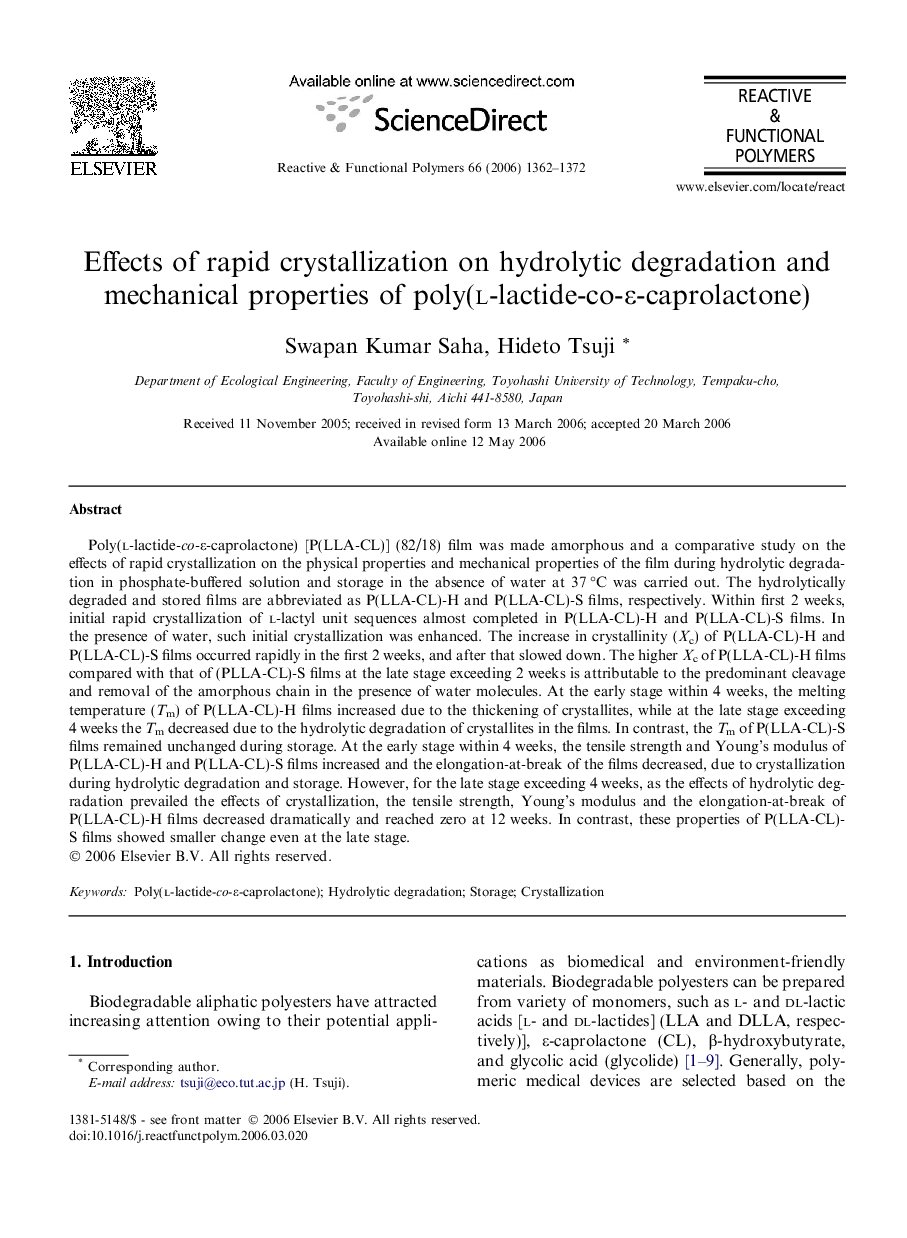| Article ID | Journal | Published Year | Pages | File Type |
|---|---|---|---|---|
| 5211712 | Reactive and Functional Polymers | 2006 | 11 Pages |
Abstract
Poly(l-lactide-co-ε-caprolactone) [P(LLA-CL)] (82/18) film was made amorphous and a comparative study on the effects of rapid crystallization on the physical properties and mechanical properties of the film during hydrolytic degradation in phosphate-buffered solution and storage in the absence of water at 37 °C was carried out. The hydrolytically degraded and stored films are abbreviated as P(LLA-CL)-H and P(LLA-CL)-S films, respectively. Within first 2 weeks, initial rapid crystallization of l-lactyl unit sequences almost completed in P(LLA-CL)-H and P(LLA-CL)-S films. In the presence of water, such initial crystallization was enhanced. The increase in crystallinity (Xc) of P(LLA-CL)-H and P(LLA-CL)-S films occurred rapidly in the first 2 weeks, and after that slowed down. The higher Xc of P(LLA-CL)-H films compared with that of (PLLA-CL)-S films at the late stage exceeding 2 weeks is attributable to the predominant cleavage and removal of the amorphous chain in the presence of water molecules. At the early stage within 4 weeks, the melting temperature (Tm) of P(LLA-CL)-H films increased due to the thickening of crystallites, while at the late stage exceeding 4 weeks the Tm decreased due to the hydrolytic degradation of crystallites in the films. In contrast, the Tm of P(LLA-CL)-S films remained unchanged during storage. At the early stage within 4 weeks, the tensile strength and Young's modulus of P(LLA-CL)-H and P(LLA-CL)-S films increased and the elongation-at-break of the films decreased, due to crystallization during hydrolytic degradation and storage. However, for the late stage exceeding 4 weeks, as the effects of hydrolytic degradation prevailed the effects of crystallization, the tensile strength, Young's modulus and the elongation-at-break of P(LLA-CL)-H films decreased dramatically and reached zero at 12 weeks. In contrast, these properties of P(LLA-CL)-S films showed smaller change even at the late stage.
Related Topics
Physical Sciences and Engineering
Chemistry
Organic Chemistry
Authors
Swapan Kumar Saha, Hideto Tsuji,
